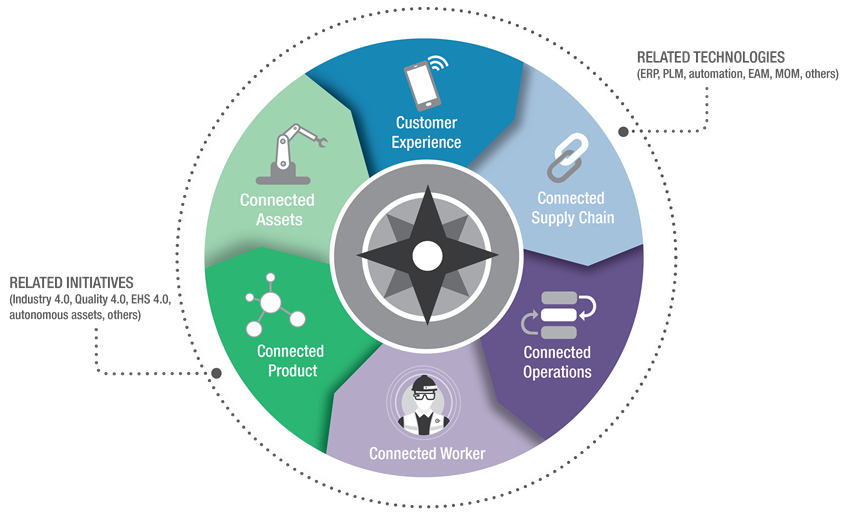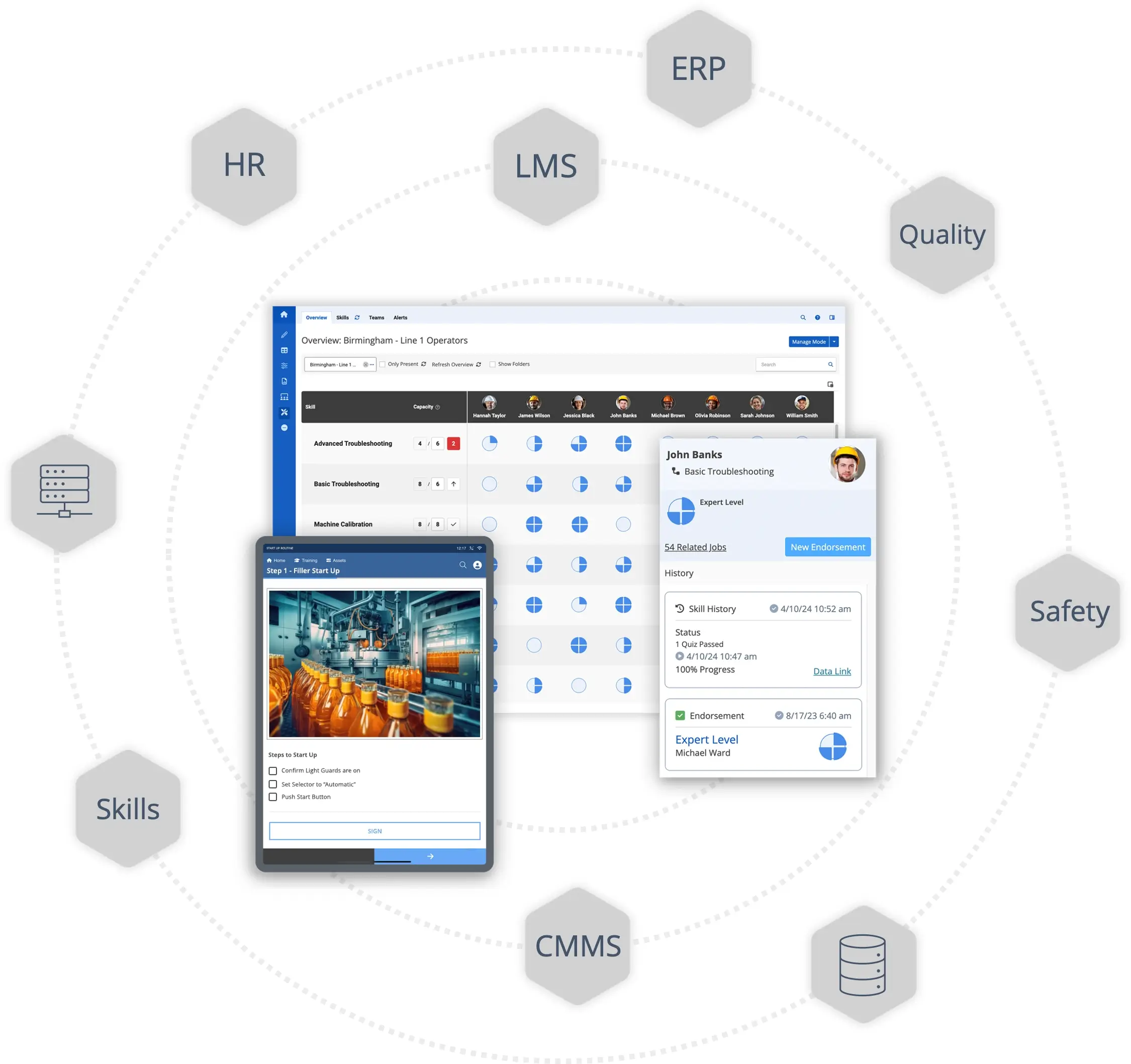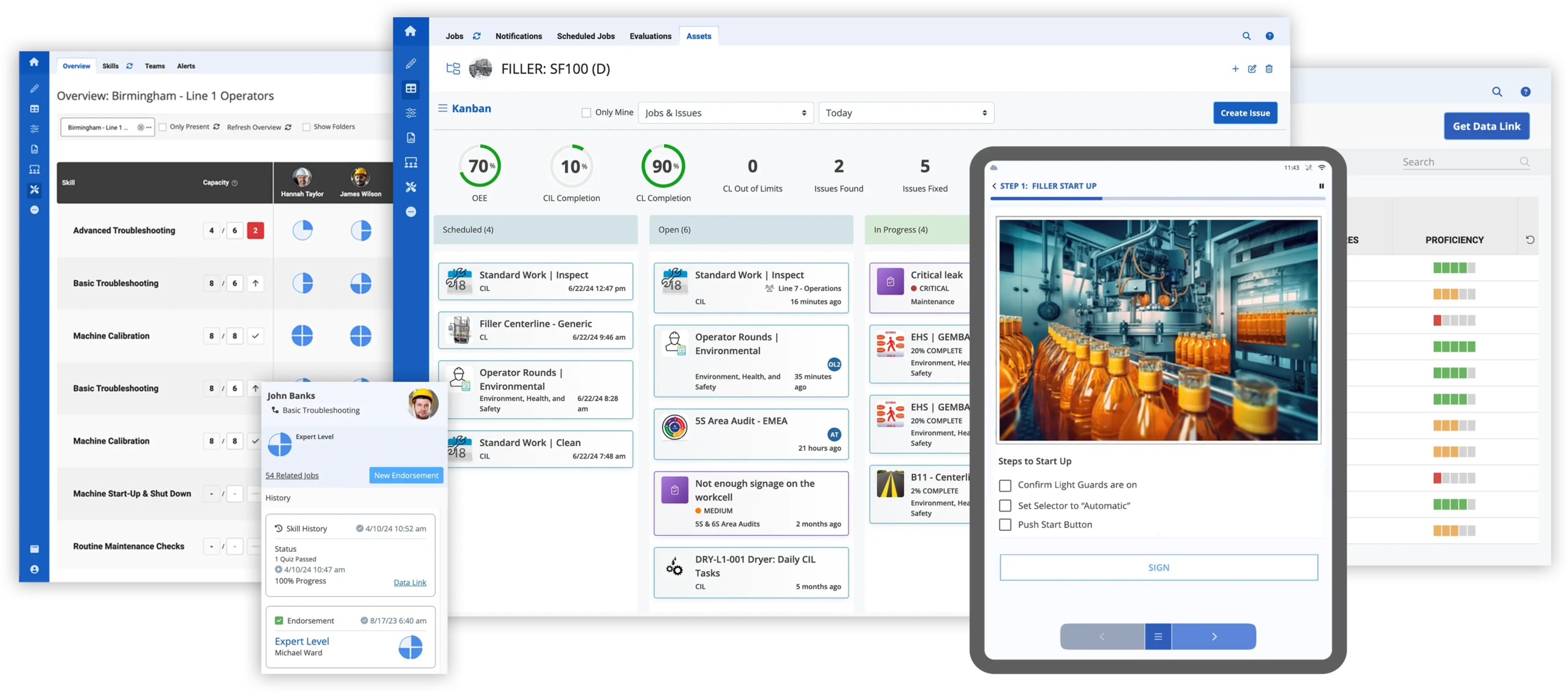1. Enhanced Productivity
Connected worker platforms integrate various systems and tools into a unified interface, streamlining workflows, reducing downtime, and improving efficiency. Frontline workers can access real-time data, instructions, and alerts directly on mobile or wearable devices, enabling faster decision-making and execution.
2. Improved Safety
Connected worker platforms incorporate mobile devices or wearables like smart helmets, AR glasses, and sensors, which monitor worker health, fatigue, and environmental hazards. Real-time monitoring enables the identification of unsafe conditions, sending alerts to prevent accidents. These systems provide enhanced compliance and adherence to safety protocols through automated tracking and reporting.
3. Real-Time Communication and Collaboration
Connected worker platforms enable remote experts to guide on-site workers through challenges using augmented reality or live video, minimizing delays. These systems facilitate seamless communication between departments or sites, fostering collaborative problem-solving.
4. Knowledge Retention and Transfer
Connected worker platforms aid in the digitization of existing corporate documents, and provide functionality to store manuals, training materials, and best practices in a centralized repository. Workers can access on-demand training and updates in the flow of work, ensuring they stay current with new technologies and processes. New or less experienced workers can quickly become productive with guidance from generative ai assistants or real-time insights.
5. Data-Driven Decision Making
Digital factories generates a wealth of data. Connected worker platforms deliver personalized insights and performance analytics directly to employees, enabling them to make data-driven decisions on the shop floor, including predictive maintenance and workforce performance tracking. This optimizes processes and supports continuous improvement.
6. Empowered Workforce and Training
These platforms provide on-the-job training, skill assessments, and adaptive learning resources, helping workers stay up-to-date with new processes and technologies. Workers gain greater control over their tasks with access to the right tools and information at the right time. The use of innovative technology fosters a more engaged workforce, reducing turnover and increasing job satisfaction.
7. Support for Flexibility and Scalability
In a dynamic connected manufacturing environment, workers need to adapt to changing tasks and processes. Connected worker platforms provide the tools and support needed to adjust quickly, ensuring that the workforce remains agile and responsive to new demands.
Connected worker platforms are integral to industrial transformation because they enable the workforce to adapt to modern challenges while leveraging technology for maximum efficiency, safety, and collaboration. By aligning human potential with digital capabilities, these platforms ensure that industries remain competitive and resilient in an era of rapid change.




